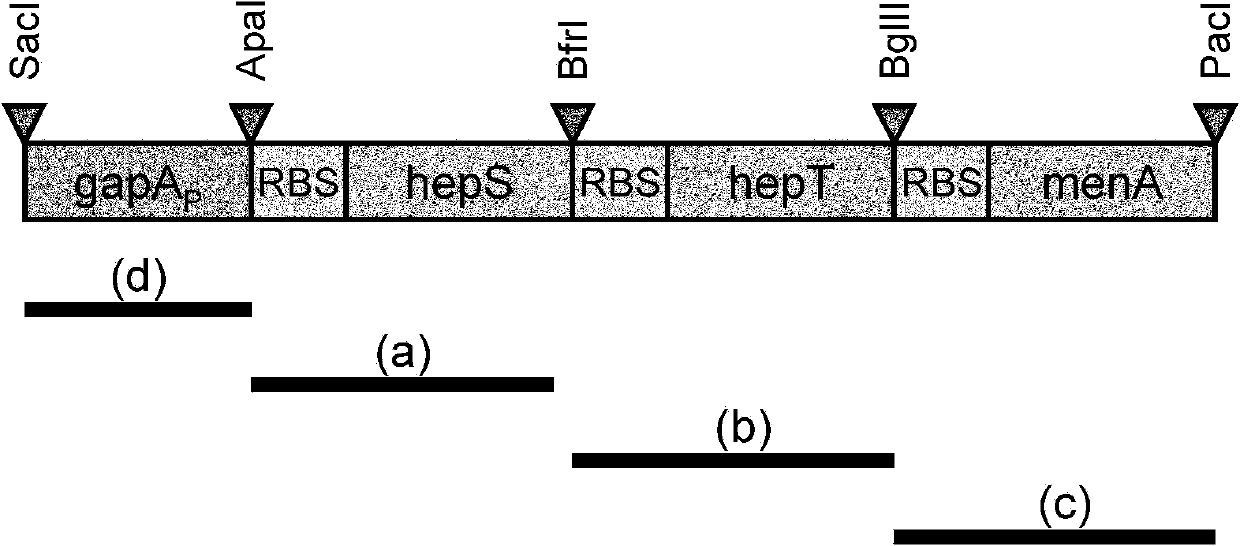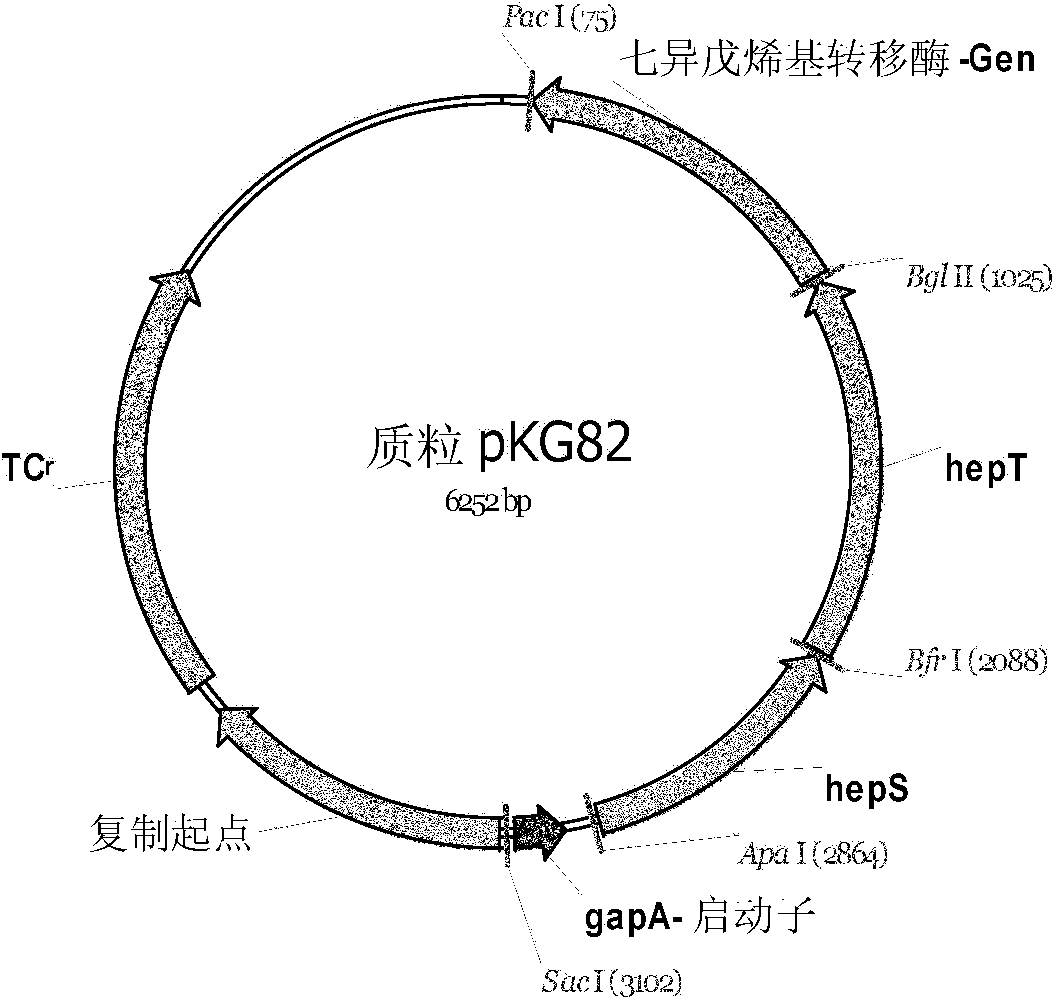Method for fermentative production of menaquinone-7 using escherichia coli
A technology of Escherichia coli and menadione, applied in the field of fermentative production of menadione-7, can solve the problems of description, no identification, no biochemical angle, etc.
- Summary
- Abstract
- Description
- Claims
- Application Information
AI Technical Summary
Problems solved by technology
Method used
Image
Examples
Embodiment 1
[0062] Embodiment 1: Construction of pKG82 plasmid
[0063] a) Amplification of the hepS gene:
[0064] The Bacillus subtilis (DSM 1088) hepS gene can be amplified by polymerase chain reaction (PCR) using Taq DNA polymerase (Roche, Mannheim, Germany) according to general techniques well known to those skilled in the art. The template used was the chromosomal DNA of Bacillus subtilis strain DSM1088. The primers used were M7-operon-hepS-forward oligonucleotide (SEQ ID NO 4) and M7-operon-hepS-reverse oligonucleotide (SEQ ID NO 5).
[0065] According to the information provided by the manufacturer, the DNA fragment of 783 base pairs obtained in PCR can be purified with DNA absorption column QIAprep Spin Miniprep Kit (Qiagen, Hilden, Germany).
[0066] b) Amplification of the hepT gene:
[0067] The Bacillus subtilis (DSM 1088) hepT gene can be amplified by polymerase chain reaction (PCR) using Taq DNA polymerase (Roche, Mannheim, Germany) according to techniques well known to ...
Embodiment 2
[0083] Example 2: Preparation of Menaquinone-7 Production Strain
[0084] by CaCl 2 The pKG82 plasmid in Example 1 can be used for the transformation of E. coli strain W3110 (ATCC 27325). After screening on LB agar plates containing 20 mg / L tetracycline, the plasmid was re-isolated from a transformant, cleaved with restriction endonuclease and detected. This strain, called W3110 / pKG82, can be used to produce menaquinone-7.
Embodiment 3
[0085] Example 3: Initial pre-culture of menaquinone-7 producing strain for fermentation (day culture)
[0086] Mix 20 ml of glucose-containing LB broth (10 g / L tryptone, 5 g / L yeast extract, 5 g / L sodium chloride, 15 g / L glucose; high pressure treatment) with tetracycline HCl in a 100 ml sterile cone. (final tetracycline hydrochloride concentration: 15 mg / L; stock solution of tetracycline hydrochloride: 10 mg / ml in sterile filtered 50% ethanol).
[0087] The cells of the producer strain were removed from the agar plate with an inoculating loop before the broth began to appear slightly cloudy. Pre-cultures were performed independently at 32°C (strain W3110 and strain W3110 / pKG82) and 30°C (strain DSM 1088), respectively, while spinning at 150 rpm for 8 h.
PUM
 Login to View More
Login to View More Abstract
Description
Claims
Application Information
 Login to View More
Login to View More - R&D
- Intellectual Property
- Life Sciences
- Materials
- Tech Scout
- Unparalleled Data Quality
- Higher Quality Content
- 60% Fewer Hallucinations
Browse by: Latest US Patents, China's latest patents, Technical Efficacy Thesaurus, Application Domain, Technology Topic, Popular Technical Reports.
© 2025 PatSnap. All rights reserved.Legal|Privacy policy|Modern Slavery Act Transparency Statement|Sitemap|About US| Contact US: help@patsnap.com



